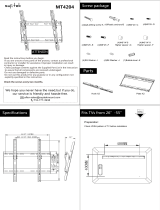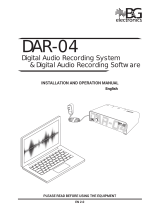
3
Table of contents
Section 1 Specifications.................................................................................................................... 5
Section 2 General information......................................................................................................... 7
2.1 Safety information ........................................................................................................................ 7
2.1.1 Use of hazard information................................................................................................... 7
2.1.2 Precautionary labels ........................................................................................................... 7
2.1.3 Confined space precautions ............................................................................................... 8
2.1.4 FCC Regulations................................................................................................................. 8
2.2 Product overview ......................................................................................................................... 9
2.2.1 Theory of operation............................................................................................................. 9
Section 3 Installation........................................................................................................................ 11
3.1 Component list ........................................................................................................................... 11
3.2 Mechanical installation............................................................................................................... 13
3.2.1 Site location guidelines ..................................................................................................... 13
3.2.2 Sensor installation............................................................................................................. 15
3.2.2.1 Assemble the clamps on the frame and wall bracket............................................... 17
3.2.2.2 Install the frame on the wall ..................................................................................... 19
3.2.2.3 Install the sensor on the frame................................................................................. 20
3.2.2.4 Align the sensor vertically—Flo-Dar without SVS .................................................... 21
3.2.2.5 Align the sensor vertically—Flo-Dar with SVS ......................................................... 22
3.2.2.6 Align the sensor horizontally .................................................................................... 23
3.2.2.7 Make a final alignment check................................................................................... 24
3.2.2.8 Optional extended depth sensor installation ............................................................ 24
3.2.3 Measure the sensor offset ................................................................................................ 26
3.2.4 Measure the pipe diameter ............................................................................................... 27
3.3 Electrical installation .................................................................................................................. 27
3.3.1 Wiring safety information ..................................................................................................27
3.3.1.1 Electrostatic Discharge (ESD) considerations ......................................................... 27
3.3.2 Connection to the logger or controller............................................................................... 28
Section 4 Operation.......................................................................................................................... 29
4.1 Install the Flo-Ware software on the PC .................................................................................... 29
4.2 Set up the logger........................................................................................................................ 29
Section 5 Maintenance .................................................................................................................... 31
5.1 Preventive maintenance ............................................................................................................ 31
5.2 Cleaning the instrument............................................................................................................. 31
5.3 Cable replacement..................................................................................................................... 32
Section 6 Replacement Parts and Accessories......................................................................... 33
6.1 Replacement Parts .................................................................................................................... 33
6.2 Accessories................................................................................................................................ 33
Section 7 How to order .................................................................................................................... 35
Section 8 Repair service ................................................................................................................. 37
Section 9 Limited warranty............................................................................................................. 39



























